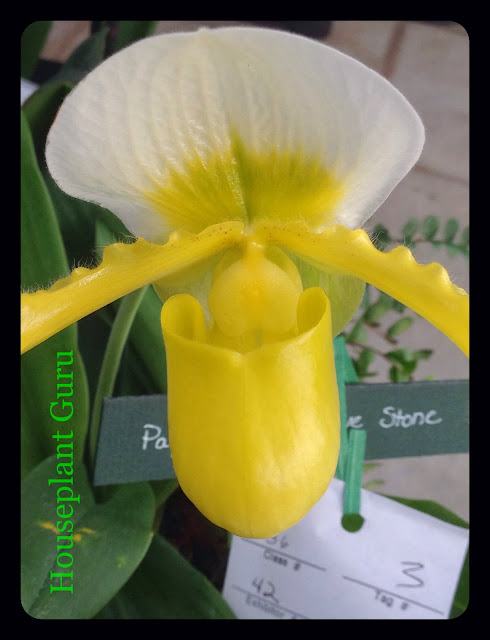Blc. Paradise Jewel Flare
I have been staying with my Mom this week in mid-Michigan. Yesterday we watched as her rural road fill up with blowing snow. The wind an snow was crazy! As the day wore on, my hopes of going to Lansing, which is over an hour away, were slowly being crushed under a mountain of snow.
I woke up this morning thinking I was going to be snowed in here all day. And then, I heard the snow plow and you've never seen anyone get ready so fast. I was beyond excited!
As I walked into the Michigan State Plant and Soil Science Conservatory the warmth and intoxicating scent of orchids was just what I needed. I'm sure every other person that walked through that door had the same feelings. It has been an extremely hard, long winter here in Michigan.
I hope the following pictures uplift you and make your winter blues a little more bearable. It sure lifted my spirits! Enjoy!
Miltonopsis 'Andrea West'

Denlindleyi
 Blc. Toshie Aoki 'Pizzaz
Blc. Toshie Aoki 'Pizzaz
Dendrobium Comet King 'Akatsuka'
Paphiopedilum Fanaticum
 Judged display
Judged display
Sales table/big trouble!
Odm Michael Newman x Joes Drum
Cirr Elizabeth Ann 'Buckleberry'
Paphiopedilum Avalon Love Stone
Chiloschista sweelimii
The orchid above has a flower that is only about 1/4" across. I loved it!
Rhyncholaeliocattleya Ishpeming
Phrag. (Nicholle Tower x Hanne Popow)
Rhymcholaeliocattleya Ports of Paradise
'Emerald Isle'
Of course, this orchid was one of my favorites. It is green!
Brs. Rex 'Sakata' x longissima 'Starfighter'
Isn't this an amazing orchid? What a blossom spike!
Here is a closer pic of it.
Aliceara matthias
Paphiopedilum Madison River
As I was taking a picture of this amazing blossom, a little boy walked up with his grandpa. He asked if an insect would go down in there. He kept repeating himself, looking for an answer his grandpa didn't have. "Does an insect go down in that, grandpa? Why?" I love when children show an interest in plants. Orchids are a great way to get boys especially, interested in plants. They have crazy shapes and wierd pollinators. One of the displays had a lego theme. There were a couple of little boys taking pictures of that display. I also saw a lot of college age kids there. It so heartening to see young people showing an interest in plants.
Paphiopedilum Liemianum
I love the hairy edges on these petals. Why are they there? I should have asked.
Bnfd. Gilded Tower
Paphiopedilum sanderianum
Look at the length of the petals on this orchid! Amazing! And the picture below looks like a person with a hat and a hand on their hip. Do you see it?
The "hairs" on this one looks like a spider.
Paphiopedilum fairrieanum
Dendrobium Angel Moon
I so needed this day today. It was so fun and educational. I sat through three classes. One was about buying an orchid, the next about re-potting orchids, and the last one about Phalaenopsis care. Taking classes from people who grow many orchids in their own homes is THE way to learn about orchids. "Straight from the horse's mouth" as they say. I really love all houseplants and learning all I can about them. No one ever knows it all, and certainly not me!



















































